In cosmetology, there are various professional peelings that help make the skin younger and eliminate various dermatological problems on the face. Sometimes it can be difficult to choose the right one, to understand which type of peeling is best suited to solve a particular ailment. How do cleansing procedures differ, how long does the effect last, what affects the cost?
Facial peeling – deep cleansing and polishing of the facial skin, removing dead cells. Deep cleansing is based on the ability of tissues to regenerate. During grinding, the cells of the upper layer of the epidermis are removed, and the body starts the recovery process. As a result, the cleaned areas are filled with new cells, blood supply and nutrition of the dermis at all levels improves.
Peeling classifications
Peels for facial skin differ in the depth of penetration and the method of removing non-viable cells. Each type of procedure has certain indications; only a cosmetologist can choose the best and most suitable one after carefully studying the condition of the dermis and the degree of age-related changes.
Classification of professional peelings by depth of impact:
- Superficial – it is used to remove the very top layer of cells, using various acids that are allowed in cosmetology, the most gentle and safe type of peeling. Copes well with fine wrinkles, post-acne, acne and age spots.
- Medium depth cleansing is a hardware procedure that triggers regeneration in cells. Helps eliminate shallow wrinkles, scars, freckles, post-acne and pigment spots, prevents aging of the dermis.
- Deep cleansing – removes several layers of skin down to the epidermis. This type of peeling can only be done in a hospital, as it is very painful and requires special skin care afterwards. The goal is to eliminate acne, scars, deep folds and kinks, and slow down the aging process.
To get rid of dead skin layers, various aggressive agents are used that dissolve dead cells - acids, abrasives, enzymes, and special equipment.
Classification of peelings according to methods:
1. Peeling with fruit acids accelerates the production of elastin and collagen fibers, the procedure is painless, suitable for dry skin. After such cleansing, the complexion improves, the skin is well moisturized, fine wrinkles disappear. It is carried out using lactic acid, glycolic acid, and bitter almond extract. The milk variety is selected for sensitive and dry skin, almond cleansing copes well with photoaging, and glycolic cleansing has a pronounced rejuvenating effect.
2. For mechanical peeling, products based on abrasive substances are used, which are applied to the skin under high pressure. As a result, the upper layer of the epidermis is cut off, wrinkles are smoothed out, small scars disappear, and the skin becomes elastic.
What types of peelings are there – mechanical types:
- brossage - a gentle effect on the skin with the help of special brushes, dead cells are removed, the dermis is polished;
- Gommage is a painless type of cleansing with fruit acids;
- scrub is a popular type of peeling, which is often done at home on your own, using exfoliating preparations.
During chemical peeling, the dermis is exposed to special compounds that dissolve old cells. After the procedure, the production of collagen and elastin fibers and hyaluronic acid increases. Indication: poor complexion, wrinkles and folds. Used to treat post-acne, dermatitis, and other dermatological diseases.
Chemical peels come in different depths. Superficial cleaning is carried out using glycolic, retinoic, phytic acid. It is a gentle species and will require no more than 5 days to recover. Medium peeling is a painful type of cleansing, it uses trichloroacetic acid, is suitable for problem skin, and fights post-acne. The degree of damage depends on the concentration of the exfoliating solution and the thickness of the dermis layer being removed. Deep chemical facial cleansing is the most painful and effective type of procedure. Phenol is used as an exfoliating composition; it will take at least a month to restore the skin.
Enzymatic peeling is a superficial type of cleansing with products based on enzymes - special enzymes of some plants. Suitable for dry skin, improves blood supply and tissue nutrition, normalizes the functioning of the immune system, and starts the regeneration process.
Facial cleansing using a vacuum is used for skin with enlarged pores. During the procedure, all impurities are drawn out from the skin; according to reviews, after such cleaning, a noticeable lymphatic drainage effect is observed. After vacuum cleaning, the process of rejuvenation and restoration occurs more actively due to the saturation of cells with all necessary substances.
Hardware types of facial cleansing
Modern cosmetic technical means allow you to cleanse and rejuvenate your facial skin; the effect of the procedure can last up to 2 years. The basis of hardware cosmetology is physical peeling, which is carried out in specialized centers.
Classification of physical types of peeling:
- Cryopilling is the most effective peeling; it is carried out using liquid nitrogen and dry ice. Under the influence of very low temperatures, a layer of skin from keratinized cells is burned, and the regeneration process starts. Used for rejuvenation, as a primary or additional remedy for the treatment of dermatological diseases.
- Laser peeling - under the influence of a laser, the upper layer of the epidermis evaporates, and the process of collagen production is activated. Effectively removes scars and wrinkles, circles and bags under the eyes, making the skin young and healthy.
- Methods of hardware cosmetology include various types of resurfacing - a procedure aimed at renewing the skin and eliminating dermatological defects. Laser resurfacing is in many ways similar to laser peeling, but the beam penetrates deeper. After cleansing, deep wrinkles and scars disappear, suitable for aging skin.
- Microdermabrasion is a mechanical cleansing of the skin using aluminum particles or diamond powder. According to women's reviews, this type of polishing allows you to get rid of freckles, various kinds of redness and rashes, and smoothes out folds and creases of varying degrees of depth. The main advantage is the absence of allergic reactions and a short recovery period.
- Dermabrasion is carried out using special rotating brushes. This grinding allows you to smooth out fine wrinkles, the most effective peeling for rejuvenation.
How to choose the right procedure taking into account age-related changes?
Dead cells should be removed at any age, but facial peeling should be selected taking into account the degree of skin aging. Correct assessment of the condition of the skin will allow you to select the optimal depth of exposure to exfoliating preparations.
1. Types of professional peelings, taking into account the degree of skin aging:
- Age 20–25 years – during this period age-related changes are not observed on the skin, but excessive dryness and pigmentation may appear. For young skin with minor problems, the best peeling is with fruit acids, scrub, gommage, and enzyme cleansing.
- In women aged 25–35 years, the first shallow expression wrinkles, age spots, and keratosis begin to appear. Laser facial peeling, superficial chemical exfoliation, and cryopilling will help you cope with ailments.
- At the age of 35-50, age-related changes are already clearly visible on the skin. Capillary networks appear, pigmentation appears, and the complexion becomes dull. To solve problems, vacuum cleaning and laser polishing are used.
- Women over 50 years old have many folds and wrinkles of varying degrees of depth on their skin, and spider veins. To rejuvenate, cosmetologists recommend laser resurfacing and deep chemical peeling of the face.
2. Types of peeling for oily skin.
Oily skin is characterized by enlarged pores, and various types of rashes often appear on it. This type of skin needs constant and thorough cleansing. Which peeling is better to choose to normalize the functioning of the sebaceous glands and prevent the formation of acne?
- Diamond facial peeling is suitable for problem skin. Special attachments cleanse the skin of impurities, dead cells, and excess sebum. The procedure helps eliminate acne and inflammation and prevent their occurrence in the future.
- The coral variety combines mechanical and chemical cleaning. They use formulations based on medicinal herbs, coral needles, and mineral salts. Well and deeply cleanses the skin of various types of impurities, polishes the upper layer of the epidermis.
3. Types of chemical peeling for problem skin:
- ABR peeling - cleansing is carried out with compositions based on salicylic acid and special catalysts. Helps eliminate infectious and inflammatory processes, suitable for the treatment of acne.
- Salicylic peeling is designed to dissolve accumulations of subcutaneous oil, eliminate sebaceous plugs and comedones. After the procedure, dry facial skin needs intensive hydration.
- Almond cleansing – an acid based on bitter almond extract has antibacterial properties, normalizes the functioning of the sebaceous glands, and narrows enlarged pores.
Peeling cost
The price of facial peeling depends on the type of procedure, the degree of age-related changes, the location of the clinic, and the qualifications of the cosmetologist.
| Type of peeling | Cost, rubles |
| Coral | 2 000 – 18 000 |
| Gommage | 1 000 – 3 000 |
| Microdermabrasion | 3 000 – 10 000 |
| Dermabrasion | 3 000 – 12 000 |
| Manual brossage | up to 2,500 |
| Hardware brossage | 2 000 – 3 000 |
| Professional scrub | 1 500 – 3 000 |
| Laser | 5 000 – 15 000 |
| Enzymatic | 6 000 – 8 000 |
| Retinoic | 5 000– 12 000 |
| Cryopilling | 3 000 – 4 000 |
Professional peelings should be done regularly by every woman, starting from the age of 20. According to reviews, exfoliating procedures have a noticeable rejuvenating effect and help eliminate various skin defects.
Basic skin care begins with thorough cleansing. And ordinary cleansers cannot provide the required effect. Even deep cleaning masks open the pores well, but with large excess sebum and severe dirt they do not help much. And then the optimal solution is various types of facial peels. We asked cosmetologists to tell us what they are and who they are best suited for.
The essence of the process
The word “peeling” comes from the English peel, which means “to wash”, “to clean”. And the name of the procedure speaks for itself. Its main task is the highest quality cleansing of pores from dirt and sebum, as well as loosening and removing keratinized dense scales that form the upper layer of the epidermis.
Many people mistakenly consider peeling to be an anti-aging procedure.. Yes, in some cases it has this effect. But for this purpose, exposure only to the surface is not enough. It must be deeper and directed in a certain way. But even after a light peeling, the face looks refreshed.
Often, cosmetologists and dermatologists prescribe medium or deep peeling for medicinal purposes. These are quite serious procedures that have a number of contraindications that can affect not only the appearance, but also the condition of the skin.
Properly selected and well-executed professional peeling can solve most fairly common problems.
Indications
Each type of peeling in cosmetology has its own indications. So, superficial experts recommend performing it at least 1-2 times a month to remove the remnants of cosmetics from the face, clogged in the pores and refresh the skin.
Medium can be an effective treatment or prevention of premature aging; it is enough to do it 1-2 times a year. There must be serious reasons for prescribing a deep one. This is a rather risky procedure, and even cosmetologists are not very fond of it.
But in general, the following indications can be considered common to all types of peeling:
- enlarged pores;
- unhealthy complexion;
- uneven skin texture;
- acne marks and spots;
- acne and comedones;
- varying degrees of pigmentation;
- loss of skin turgor;
- shallow scars and scars;
- skin photoaging;
- swelling of the oval of the face;
- small wrinkles.
Medium and deep peels can also cope with some dermatological diseases. But in this case, they are done strictly as prescribed by the doctor. Moreover, if for aesthetic purposes the minimum age of the patient is 25-30 years, then for therapeutic purposes it can drop to 14-15.
Cleaning depth
We have already mentioned that there are superficial, medium and deep peels. Collected under a common name, these can be fundamentally different procedures. That is why it is so important to visit an experienced cosmetologist who, depending on the existing problems and skin condition, will select the best option at the moment.
| View | Description |
|---|---|
| Superficial peeling | It does not touch the living layers of the skin, but works only with already dead flat cells, which pack tightly and form a protective layer. This is a painless, although not always pleasant procedure, which has a minimum of contraindications and without the risk of complications and side effects. Many people regularly perform it at home. |
| Median | Penetrates deeper and is able to influence metabolic processes. It already has a healing and rejuvenating effect, but does not injure the dermis too much. After such peelings, the skin needs active restoration. It can last from several days to 3-4 weeks. During this period, you must take special care and protect your face from negative external influences. |
| Deep (laser or chemical) peeling | It is performed only in a hospital setting using intravenous or general anesthesia. This is a rather risky undertaking, and in the event of a medical error, it entails very unpleasant consequences: scars, scars, changes in the natural color of the skin, etc. However, if performed efficiently, such peeling can rejuvenate the patient by 8-10 years, since the old skin on the face is actually completely burned out and replaced with new one. |
Medium peeling remains the most popular among patients. The optimal age range for it is 30-55 years, when the first signs of aging are already visible, but the cells have retained the ability to actively regenerate.
Classification
It is quite difficult to give a detailed and unambiguous classification of peelings. Too many of their varieties exist today, and new ones are constantly appearing. But for the convenience of readers, we have grouped them by type of effect on the skin.
Mechanical
To a rough approximation, mechanical peeling is similar to cleaning a surface with sandpaper. The keratinized cells are erased from it by solid particles. This can be done manually or using special professional equipment.
Scrubbing
A scrub is a gel or cream-based composition that contains water-insoluble particles. It can be:
- wax granules;
- quartz sand;
- crushed seeds;
- plants' seeds;
- dried crushed herbs.
The composition is applied to damp, pre-washed skin and keratinized dead cells are “rolled” onto it with soft circular movements.
After such scrubbing, the skin becomes smooth and velvety, turns slightly pink and is able to breathe fully. Makeup adheres better to it, creams are absorbed faster, and pimples and acne appear less often.
But it is important not to overdo it so as not to irritate the skin or scratch it, especially if you use stone scrubs, which are not suitable for everyone.
Brushing
It can be done both in the salon and at home using a fairly stiff round brush with synthetic bristles. After applying the grinding paste to the face, it is processed with rotational movements until the skin is almost perfectly smooth.
There are several types of brushing attachments in salon machines. So this procedure is performed more effectively and safely than at home. But there are some pretty good portable devices that run on mains power or batteries. In the primitive version, such cleaning with a brush is done manually.
Microdermabrasion
The most severe type of mechanical peeling, which is performed using hardware. The device is a vacuum pump with adjustable suction force and a set of diamond-coated heads of varying densities. The heads are reusable and the safety of the procedure for the client largely depends on the quality of sterilization.
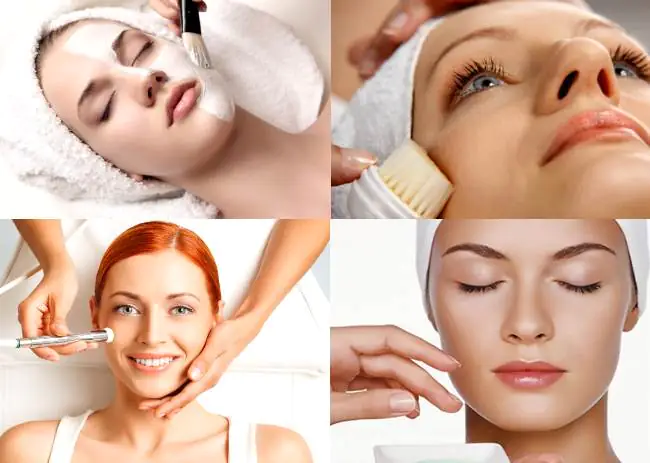
Problem areas or the entire surface of dry, clean skin are treated with heads, the configuration and hardness of the coating of which are selected individually. The procedure is not painful, but severe redness often occurs after it, and dermatitis can develop on sensitive skin. However, it perfectly removes small scars, post-acne, and shallow pigmentation.
Hardware
Hardware peelings include procedures based on physical processes. The most common are ultrasound and laser. For the first option, there are portable devices designed for home use. Laser peeling is quite expensive and can only be done by professionals.
Ultrasonic
The principle of operation of this procedure is the creation of a shock sound wave in the high-frequency range, inaudible to the human ear. A liquid or special gel is first applied to the skin. Ultrasound breaks it into fine particles, which literally knock out fat from the pores and cells from the surface of the epidermis.
One of the few cleansing procedures that are not only harmless and painless, but also quite pleasant. It can be performed on very thin and sensitive skin and has no recovery period. Some devices also have a pulse mode, which gives a slight lifting effect.
Laser
Laser peeling can be performed at all three levels: superficial, medium and deep. Moreover, as needed at the same time. This is one of the most expensive, but effective salon procedures, allowing you to quickly eliminate even pronounced signs of aging.
Deep laser peeling, like chemical peeling, is performed only in a hospital setting, and the patient will have to spend at least another day under the supervision of medical staff.
But the result after a successfully performed procedure is sometimes comparable to surgical skin tightening. But there are situations in which laser peeling is powerless and can even cause harm.
Chemical
During chemical peeling, the problem area is treated with a biologically active composition, which loosens the upper layer of the epidermis, dissolves fat and affects metabolic processes.
Their big advantage is that the integrity of the skin is not compromised, and if the active substance is chosen correctly, its condition even improves. But if they are used incorrectly, severe burns and other complications are possible.
Enzyme
Enzyme peels are used for superficial cleansing and gentle effects. They can be bought in regular cosmetic or professional stores and used at home yourself, including (with extreme caution!) in the delicate area around the eyes and lips. Cosmetologists recommend using such products from 2 to 6 times a month, depending on the type and condition of the skin.
Enzymes are enzymes of animal or plant origin that are the basis of such peels. Most often they contain: bromelain, papain, trypepsin, etc.
Due to the high biological activity, such peelings can cause a strong allergic reaction, but this happens very rarely in people with individual intolerance to their individual components.
Acidic
Can also be used at home for surface cleaning. In this case, the concentration of acids should not exceed 10-15%. If it is 20% or higher, a professional should work with such compositions, who can individually select the exposure time and the number of layers applied. A concentration of more than 40% allows for medium-deep peelings, but it can also cause severe injuries in the wrong hands.
The most common acid peels:
| Name | Description |
|---|---|
| Fruit | Perfectly eliminates shallow pigmentation and signs of photoaging, evens out skin texture. |
| Salicylic | Allows you to quickly get rid of blackheads and pimples, as well as post-acne. |
| Almond | The softest, which can be used even in summer and on sensitive thin skin. |
| Retinoic | It has an effect on metabolic processes and is recommended for aging skin. |
| Pyrovinogradny | Perfectly brightens the skin, removes acne marks and spots, as well as acne. |
| Lactic | This type of acid perfectly moisturizes the epidermis and stimulates the production of hyaluronic acid. |
| Glycolic | Due to its small molecular size, it can penetrate deeper than other acids. |
To prevent early aging, it is enough to do such peelings 1-2 times a year. For therapeutic and rejuvenating purposes, you will have to undergo a course of 3-6 procedures with an interval of about two weeks. The recovery period after it is about a month.
Combined
Combined peelings are patented compositions developed by scientists, which include several types of acids or other biologically active components.
A striking example is the Jessner peel, which contains lactic and salicylic acids, as well as a substance with anti-inflammatory and tanning properties - resorcinol.
Such peels are used to solve more serious skin problems than enlarged pores and fine wrinkles. With proper selection and use, they can even save the patient from dermatological diseases, while, as a bonus, giving the effect of minor lifting and rejuvenation.
Contraindications
There are fewer contraindications for superficial peels than for medium and deep peels. Scrubbing, brushing and enzyme scrubbing are not prohibited even during pregnancy and breastfeeding, when other types of procedures cannot be used.
Contraindications common to all peelings are:
- violation of skin integrity;
- active inflammatory processes;
- psoriasis, eczema and other skin diseases;
- any form of oncology;
- tendency to form keloid scars.
Hardware procedures are not performed if there are metal implants in the problem area or a built-in pacemaker.
Deep and medium chemical peels are prohibited for patients with cardiovascular, renal and liver failure. Before deep peeling, as before a regular operation, the patient undergoes an examination and an anesthesia tolerance test.
Summing up
Now that you know what types of facial peels there are and their general description, it will be easier to talk with a cosmetologist. He will also give professional advice on which products for cleansing pores and exfoliating dead cells are best for you and how often to use them.
You shouldn’t rely on ratings in magazines – these are just general statistics. Peelings, like caring creams, should be selected individually.
If you decide to purchase a portable ultrasonic scrubber or brushing device, be sure to check whether it is certified. Cheap Chinese counterfeits often only create the appearance of working on the skin, without actually affecting it in any way. The technique for performing the procedure is described in detail in the instructions and must be followed strictly. The specified time and frequency of use must also not be exceeded.
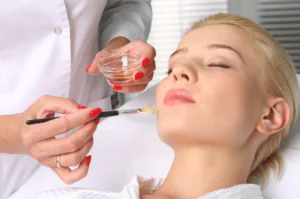
All women want their skin to always be attractive and youthful. To do this, they carry out caring procedures, including at home. Beauty salons now offer a wide range of face and body care services, but these manipulations can only be performed by specialists. For example, various types of facial peeling that promote rejuvenation and healthy skin.
What is peeling

Peeling is a cleansing of the skin of the face or body, during which all dead cells that create obstacles to the regeneration of new cells are removed. A properly performed peeling procedure rejuvenates the surface of the skin and makes it healthier. During the procedure, a damage effect occurs. From this moment on, the body starts working, starting the recovery process. After the procedure, pigment spots, scars, wrinkles disappear, and skin color is evened out.
In areas cleared of damaged and exfoliated cells, new and young ones appear. They are filled with nutrients, which promotes healthy skin. Polishing helps get rid of the first signs of aging of the skin and maintain its youth.
Based on the depth of exfoliation, skin cleansing is classified into several types:
Experts also divide peelings into types of impact, taking into account the method of their implementation and effect:
Modern cosmetology offers many methods and procedures for renewing the skin. They all have their pros and cons, features and age restrictions. What types of peelings there are and their main characteristics can be found out from the specialist performing the procedures.
Classification of skin peels
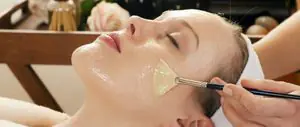
All procedures have their own characteristics, indications and contraindications. After examining the skin surface, a qualified cosmetologist will determine what is best to choose. The patient's age is also taken into account.
With superficial peeling, only the top layer of cells is removed. During this procedure, the cosmetologist uses gentle acids and their safe varieties. This procedure copes well with fine wrinkles, age spots, acne and subsequent manifestations.
Medium-depth cleansing makes it possible to start cell regeneration after using hardware procedures. After this, freckles, shallow wrinkles, scars, age spots, acne marks disappear and the aging of the epidermal layer is prevented.
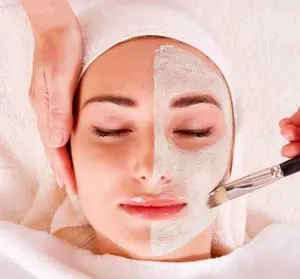
Deep cleaning is considered the most radical, since it can be used to remove the entire epidermal layer with the germ zone. It removes several layers of skin and gives a lasting and pronounced effect. The procedure is painful and is performed in a hospital by a dermatologist. After this, deep wrinkles are smoothed out, age spots disappear, the skin is tightened and its relief is evened out.
In addition to the classification of peelings by depth of impact, procedures are divided into several types depending on the materials and devices used.
Mechanical facial cleansing
These types of peeling include superficial cleansing and medium impact on the skin surface. The specialist uses special products containing crushed solid particles and granules. This allows you to quickly and painlessly remove dead cells. To carry out this procedure, the following tools are used:
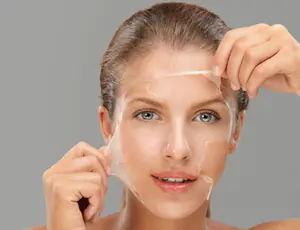
scrubs in the form of cosmetic gel, which contain natural or synthetic abrasive particles (crushed walnut shells, apricot kernels, coffee);- Gommage is a rolling cream containing abrasive microparticles and fruit acids that dissolve on the skin during cleansing;
- film masks that form a silicone layer on the skin surface, which is removed along with dead cells after the procedure;
- salt peeling using products based on sea salt, beneficial minerals and mineral water;
- coral polishing, during which products based on coral chips and herbal ingredients are used.
Mechanical peels are also available at home, if you know how to do them correctly. After them, the skin becomes healthier and younger.
Salon chemical peeling
This cleaning is carried out only by a specialist, removing a layer of skin with chemical acids and alkalis. All types of chemical peels are made using special products containing alkalis and acids intended for cosmetic manipulations.
Most often, cosmetologists use certain substances:
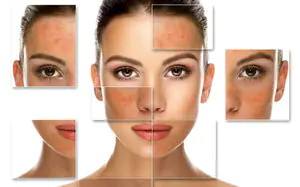
Fruit acids (FA), lactic acid found in fruits, berries and dairy products. It has the property of restoring the water balance in the dermis and whitening age spots well. Tartaric acid also helps exfoliate, moisturize and whiten the skin. With the help of glycolic acid, which is found in sugar cane, you can effectively get rid of age spots. At the cellular level, malic acid can restore the skin, and citric acid disinfects and whitens the skin surface.- Mandelic acid is able to exfoliate skin cells, helps in the fight against acne. It normalizes the functioning of the sebaceous glands and the water balance in the dermis layer. The substance also has an anti-inflammatory effect.
- Salicylic acid has an anti-inflammatory and calming effect, dissolves dead cells.
- Retinol or yellow peeling cleanses the skin with several acids: phytic, kojic, retinol, azelaic. Vitamin C is also involved here. This procedure refers to synthetic chemical types.
- Enzyme treatment is carried out using preparations based on fruit extracts: grapefruit, pineapple, figs, grapes, as well as papaya enzyme. All these plant enzymes even out the complexion and relieve inflammation, remove dead cells.
- Preparations based on trichloroacetic acid have antimicrobial, regenerating properties. anti-inflammatory, stimulating and cleansing effect.
- Carboxylic acid is a rather aggressive substance, so it is used only for deep chemical cleaning.
Hardware cleaning method
The physical or hardware method is carried out in beauty salons or specialized clinics. Modern devices help cleanse and significantly rejuvenate facial skin. The effect of such procedures lasts up to 2 years. There are several types of hardware skin cleansing procedures:
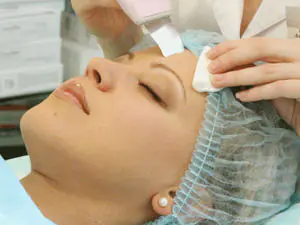
Cryopilling is considered the most effective procedure. It is performed using liquid nitrogen and dry ice. Used for skin rejuvenation, as well as for the treatment of dermatological diseases.- Laser resurfacing helps restore skin cells under the influence of laser beams. It is effective for removing wrinkles, circles and bags under the eyes, scars. Great for aging skin.
- Ultrasonic cleaning removes the stratum corneum, removes fine wrinkles, and the skin becomes smoother.
- Dermabrasion is skin polishing using a rotating brush or cutter.. After this, the dead epidermis is removed, and small wrinkles are smoothed out and become invisible.
Natural and enzyme peeling
When carrying out enzymatic cleansing, enzymes of plant origin are used. During cleansing, enzymes act on the intracellular composition of the epidermis.
Natural peeling is very similar to enzyme skin cleansing. All drugs used contain only natural ingredients. Many products contain healing sea minerals and rare herbs. Most of them grow in Brazil.
Pros and cons of the procedure
Peels should be performed if dullness of the skin surface is observed. The procedure is indicated when aesthetic problems need to be corrected:
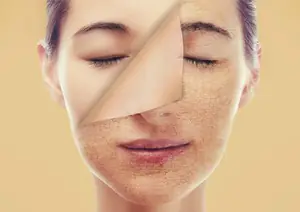
Professional cleaning should be performed to remove dead cells from the skin. Peeling is also recommended for oily or dry facial skin. Oily skin provokes the appearance of acne and pimples, and dry skin lacks moisture. Procedures help normalize all these processes. After a course of peeling, age-related changes slow down at the first signs of aging.
Peels provide a wonderful cosmetic effect and, despite this, the procedures have contraindications:
- inflammatory processes on the skin;
- pregnancy and lactation;
- herpes in aggravated form;
- wounds and abrasions;
- recent hair removal;
- intolerance to drug components.
For such cosmetic sessions to be beneficial, you first need to consult a specialist. The procedures should only be performed by a qualified cosmetologist.
According to cosmetologists, all these procedures are best performed in the cold season. This allows you to protect the skin and cleaned tissues from exposure to active sunlight, dust and dirt. Peels help to quickly and effectively clean and restore the skin, making it younger and healthier. Which procedure to choose will depend on the age, skin condition and health of the patient.



